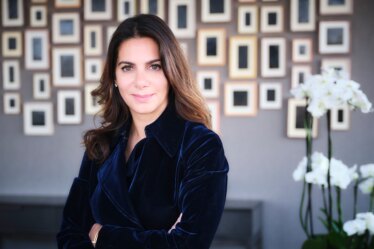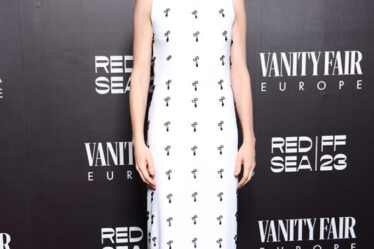MILAN — During Milan Design Week, BoF and Design Hotels hosted an executive briefing at Triennale di Milano on the latest BoF Insights report: The Lifestyle Era: Luxury’s Opportunity in Home and Hospitality. The report examines opportunities in the $4.3 trillion lifestyle sector, which is set for growth as luxury consumers continue to prioritise experience and place greater value on the spaces where they live, work and socialise.
With three distinct areas of opportunity for fashion and luxury brands to explore in the homeware space — home design, hotels and branded dining experiences — attending executives represented fashion brands and retailers including Gucci, Off-White, MyTheresa, Dior, Etro, Tod’s and Moncler, as well as hospitality executives, with leaders representing C-Hotel, Firmdale Hotels, G-Rough, The Cōmodo, Vigilius Mountain Resort and more.
BoF’s Imran Amed hosted the event with Jenni Benzaquen, managing director of Design Hotels and SVP EMEA brand portfolio at Marriott International, who shared insights into how the behaviour of luxury consumers is evolving in the hospitality space.
“The biggest trend we’re seeing right now is a term called ‘purposeful travel’. […] Among our top loyalty members, […] they’re not looking anymore at room size or facilities, spas and all of that — they’re looking at how do I travel to a unique destination […] to experience something I’ve never done before and give back to the community that I’m travelling to.”
With this shifting consumer sentiment, opportunities in the luxury lifestyle space abound for fashion and beauty brands. About 70 percent of wealthy consumers in the US, UK and France surveyed for the report say they are more likely to shop for home products from brands from whom they have already purchased, while 40 to 50 percent say they expect to increase spending on home textiles, decor and fragrances.
For the briefing, BoF’s Rahul Malik first delivered an introductory overview of key findings from the latest BoF Insights report.
“Two categories that have seen the greatest increase [of spend by luxury consumers] is home design, and health and fitness. Consumers are spending more to revitalise those intimate spaces and invest in themselves,” said Malik. “The home design industry globally is growing faster than before the pandemic. We observe a similar thing when we look at hotels and branded dining.”
Among the overview of findings Malik presented to attendees, he shared insights into the playbook designed to offer guidance on brands looking to enter this space: “[Consumers] are looking to deepen their affiliation with the fashion and beauty brands that they have already […] purchased from. […] The brands that do this right take a very deliberate, perhaps even slow approach, to trying to decide where and how they want to play.”
Malik was then joined by report contributors JJ Martin, founder of La DoubleJ, Daniel Lalonde, chief executive of Design Holding, and Isabelle Dubern-Mallevays, co-founder of Invisible Collection, to discuss the growing opportunities in the home design and hospitality space for fashion and beauty brands.
The panel shared their intrinsic expertise to the foray of luxury fashion brands into home design and hospitality. At Design Holding, with his storied career at the likes of SMCP, Ralph Lauren and LVMH, Lalonde is overseeing the Fashion Furniture Design (FF Design) venture with Fendi, under which Fendi Casa was born. Co-founder of Invisible Collection Dubern-Mallevays spearheaded the artistic direction of Dior Maison and works with designers in Chanel and Cartier projects. Fashion and homeware label La DoubleJ has just launched a capsule collection with Bulgari Hotels, with JJ Martin’s first interior design project launching at the hotel Passalacqua in Italy’s Lake Como.
Below, BoF collates key insights from the panel talk.
Understand Shifting Consumer Behaviour Post-Pandemic
DL: “Since the pandemic, people have changed the way they live – the home is central, multipurpose. […] And what we have seen as well is not only inside the home but also outside. [Consumers] have moved from urban locations to the countryside, and this has been a wonderful opportunity.
“The luxury design sector was an industry growing at 3 or 4 percent per year, and all of a sudden, during the pandemic, we saw 25 percent growth, even higher. […] All the bankers were asking me: ‘is this sustainable? Was it just a blip?’ We’re convinced that it is not [a blip] and it will grow much faster because people have changed how they live and in experiences, investing in home.”
The root to market in [the interiors] industry is traditionally wholesale-oriented. But […] we need to take this playbook from luxury and talk to the consumer first.
“There’s a lot of commonality in challenges for fashion and luxury brands stepping into the design space. […] But we share the same customer. She has a Birkin bag, a Cartier watch […].
“The root to market in [the interiors] industry is traditionally wholesale-oriented. But the end consumer is where we need to go — we need to take this playbook from luxury and talk to the consumer first.”
IDM: “This new notion of quiet luxury was […] born during the pandemic [and the home] moved from this notion of a refuge to [one of] intimacy. Everyone wants to find intimacy again in their home, and wants to recreate something new.”
Translate Brand Identity Authentically Across Categories
IDM: “For [Christian] Dior, my one mission was to create a capsule for London and […] to recreate the kind of magic of Christian Dior, and my idea at this time was to do like Christian Dior did — he was a former gallerist and he had many friends that are artists, painters, writers.
“We invited some designers and asked them to recreate this thought of Dior, with the most fantastic craftsmen and artisans.”
JM: “I founded my business in 2015 selling vintage clothing and jewellery […] and in 2017, based on a total whim and internal feeling. I launched homeware, not thinking that this was actually a good business decision — it just felt like something intrinsically that was so linked to the brand and felt very natural. During the pandemic, […] our homeware was growing so much and really keeping us afloat and keeping the lights on.
“When you get into homeware, make sure that there’s a connection there. […] That’s the one thing that has made probably the biggest splash with us is that we are all about print, we’re all about pattern, we’re all about colour, and we do the exact same thing in our homeware as well.
“My motto at the company is all about increasing the frequency of our energy, and there’s so many different ways to do this today as a human being […] I would like to bridge some of the retreats we have done […] and start really folding it into fully immersive experiences, which are entirely La DoubleJ. My dream is [to] wrap this up in this fully immersive experience.”
Balance Innovation With Manufacturing Nuances
JM: “Everything we [produce] at my company is 100 percent Made in Italy, but you find a lot more innovation with fashion than you do with homeware. So, I’m working with a porcelain maker in Verona who has been doing things the old fashioned way for 250 years. They are extremely laborious, they’re extremely painstaking, they’re not quick, but they do a beautiful product.
[…] “We learned that traditional porcelain makers tend to have like one maybe two colours on their plates. And I was dumping 25 on one plate. This becomes an incredible challenge from a production standpoint and control. So, it’s taken a lot of work there as it’s more complicated.”
“On the one hand, I want to keep everything in Italy. It’s so important to me that we respect those artisans, that we really honour what they’re doing and we don’t change it. [But] I’m always trying to get them to rise to the occasion. So it’s a fun, little playful game.”
When you get into homeware, make sure that there’s a connection there. […] We’re all about print, we’re all about pattern, we’re all about colour, and we do the exact same thing in our homeware.
DL: “I would stress the importance of manufacturing. We produce, as I said, almost all of our products from our brands. We have R&D teams that provide technology and innovation to our creative directors, which are among the best architects and designers of the world. But it’s important for us to produce — it’s craftsmanship, a little bit like the Swiss watch industry.
“I think that’s something that luxury brands will need to think about when they step it more broadly into the category — it’s not just outsourcing production, but how do you actually control it? So I think there’s a lot of opportunity, but some challenges for these brands.”
DL: “We create through our brands and architect designers objects that last a lifetime. That’s the first part of sustainability — the durability of products throughout their entire lives. […] You typically see your sofa, your lights, almost every day of your life. So it is something that is there for a very, very long time. […]
Guide Consumers into New Lifestyle Products
IDM: “The new generation is discovering interior design through instagram — discovering a new world and new universe of intimacy. This is great for our companies, and we have seen a huge difference since the pandemic.”
JM: “We give this ability to the customer to opt in to degrees of maximalism. So if you’re a minimalist, you can just buy the napkins or you can just buy the silk shirt and wear it with your black suit. I use the same mechanics in terms of merchandising a table — I give people options of how to build up. You can have one pattern on your table, or you can have 55. We give that option and we love to show that.”
“Our iconic item […] is just this mixed set of six dessert plates. A customer is oftentimes very intimidated about how to mix patterns in their home, or even on their body, so what we do is we take the guesswork out for them and we give the set of six that already have their already mixed up that look great together so they don’t have to think about it.”
This is a sponsored feature paid for by Design Hotels as part of a BoF partnership.


